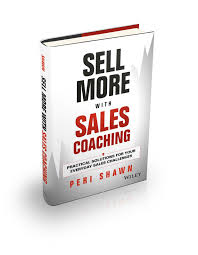Have you ever noticed that many entrepreneurs talk passionately about growing their businesses and, in the same breath, they say they hate selling? This is like saying you want to win the New York City Marathon although you hate running. Counterintuitive, isn’t it?
Part of the reason sales has such a bad rap is because people often use stereotypical models as their measure.
Recently I was introduced to Amir. We engaged in a pleasant conversation when Amir asked what I did. I told him I was a sales author. His response revealed his perception of sales. He said, “Really? But you seem so nice.” And at the same time, he took a step back.
This is like many others who lean back when they find out I’m a sales author. You may think this kind of response is out of the norm, but it’s not. For many, sales is be a dirty word.
What image do YOU see when you think of the word “sales”? If you picture a stereotypical used car salesman, you’re not alone. In fact, a recent study by Daniel Pink confirms this. Most people think of sales as sleazy and manipulative.
If you have a negative perception of sales, it just might be getting in the way of your sales success. It’s understandable. After all, who would want to engage in behaviors or look like the stereotypical used car salesman? Not me. Plaid ain’t my thing. And I’m guessing, it isn’t yours either.
You may be thinking, “How do I change my negative impression of sales?”
Here are two ways to start changing that image and improving your sales results:
ONE: Update your definition of sales. Why? Your sales definition informs your sales behaviors. Selling is about helping others with their buying decisions. It’s not about the traditional twisting of arms to slam dunk a close.
TWO: Identify what sales mistakes are making you act more like the guy in the plaid jacket. You may be thinking, “I don’t make sales mistakes.” Well, that is possible. We have yet to find a professional sales team that doesn’t commit sales mistakes.
Of course, you don’t commit sales mistakes on purpose, which leaves you asking: “How do I know if I’m making sales mistakes?” That’s a great question.
There are symptoms that indicate you might be committing one or more of the 10 biggest sales mistakes. For example, are you:
- Not getting as many referrals as you would like?
- Not getting much repeat business?
- Taking too long to close?
Here’s the list of the 10 biggest sales mistakes people make during their sales conversations:
- Not being clear who's buying
- Forgetting why people buy
- Being self-focused
- Telling mistruths
- Being ill-prepared
- Taking too much of the client's time
- Sharing what's not relevant
- Missing prospects' buying cues
- Acting like a traditional salesperson
- Treating clients as enemies
Do any of these sound familiar? If so, you might benefit from doing a bit of planning. Here are three things to keep in mind:
1. Don’t Be Too Hard on Yourself!Do a self-check to ensure you’re focused on sales improvement rather than judging yourself for your sales mistakes. Stay focused on your incremental improvement. Kicking yourself for your mistakes isn’t productive.
2. Be SpecificDetermine which sales mistakes you’re committing. As mentioned above, certain symptoms will uncover which of the 10 mistakes you’re making. For example, if you’re haunted by price objections, it may be an indication that you are committing mistake number 2, forgetting why people buy. Prospects often revert to using price as their buying criteria when you haven’t offered other valuable criteria for them to consider.
3. Commit to Your Sales RehabilitationCommit to sales coaching on a regular basis (whether you are being coached by someone else or coaching yourself). Sales coaching is about learning more quickly from your experience. It will help you determine what’s working and what’s not working. Sales coaching is the key to your sales improvement.
Once you ensure you’re not committing the 10 biggest sales mistakes during your sales conversations, you’ll stop getting in the way of your sales success and start selling more, better, sooner and more often.
_______
This blog post is adapted from Peri Shawn’s NEW book, Sell More with Sales Coaching. To receive two FREE chapters, go to www.CoachingandSalesInstitute.com



